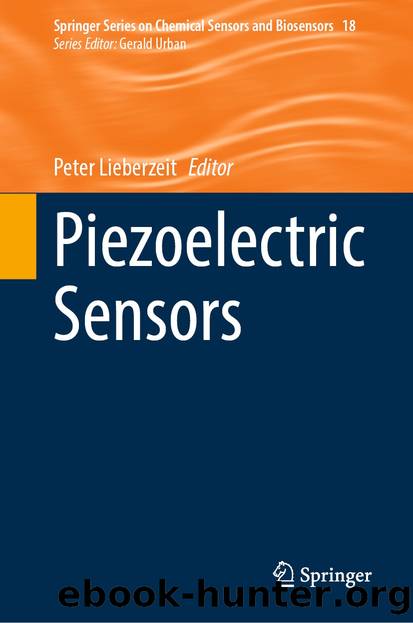Piezoelectric Sensors by Unknown

Author:Unknown
Language: eng
Format: epub
ISBN: 9783031537851
Publisher: Springer International Publishing
Ye et al. later applied similar concepts to synthesize surface-imprinted polymer beads for bacterial recognition [128], namely Pickering emulsions relying on bacteria cells as the stabilizer. First described in 1907 [129], Pickering emulsions represent the process of forming an emulsion between water and oil phases using solid particles instead of surfactants as the stabilizing agents [130]. Ye and coworkers relied on a first self-assembly step of negatively charged bacteria (i.e., Escherichia coli and Micrococcus luteus) to a positively charged vinyl-containing pre-polymer (i.e., N-acrylchitosan). This bacteriaâpre-polymer assembly served as the particle stabilizer for the Pickering emulsion in water. The oil phase consisted of crosslinking, hydrophobic monomers and a radical initiator. FRP was then used to form polymer beads with the covalently attached pre-polymerâbacteria assembly. The bacteria were then removed, leaving behind surface imprints on the beads (Fig. 18).
Fig. 18Schematic overview of the process of bacteria assembling with the monomer N-acrylchitosan, followed by Pickering emulsion polymerization to form stable bacteria beads which can be used for rebinding. Reprinted with permission from [128], © John Wiley & Sons
Download
This site does not store any files on its server. We only index and link to content provided by other sites. Please contact the content providers to delete copyright contents if any and email us, we'll remove relevant links or contents immediately.
Whiskies Galore by Ian Buxton(40506)
Introduction to Aircraft Design (Cambridge Aerospace Series) by John P. Fielding(32346)
Small Unmanned Fixed-wing Aircraft Design by Andrew J. Keane Andras Sobester James P. Scanlan & András Sóbester & James P. Scanlan(32146)
Aircraft Design of WWII: A Sketchbook by Lockheed Aircraft Corporation(31780)
Craft Beer for the Homebrewer by Michael Agnew(17462)
Turbulence by E. J. Noyes(7057)
The Complete Stick Figure Physics Tutorials by Allen Sarah(6646)
The Institute by Stephen King(6290)
Kaplan MCAT General Chemistry Review by Kaplan(6066)
The Thirst by Nesbo Jo(5792)
Bad Blood by John Carreyrou(5780)
Learning SQL by Alan Beaulieu(5423)
Weapons of Math Destruction by Cathy O'Neil(5046)
Permanent Record by Edward Snowden(5007)
Man-made Catastrophes and Risk Information Concealment by Dmitry Chernov & Didier Sornette(4748)
iGen by Jean M. Twenge(4705)
Digital Minimalism by Cal Newport;(4566)
Navigation and Map Reading by K Andrew(4558)
Life 3.0: Being Human in the Age of Artificial Intelligence by Tegmark Max(4519)
